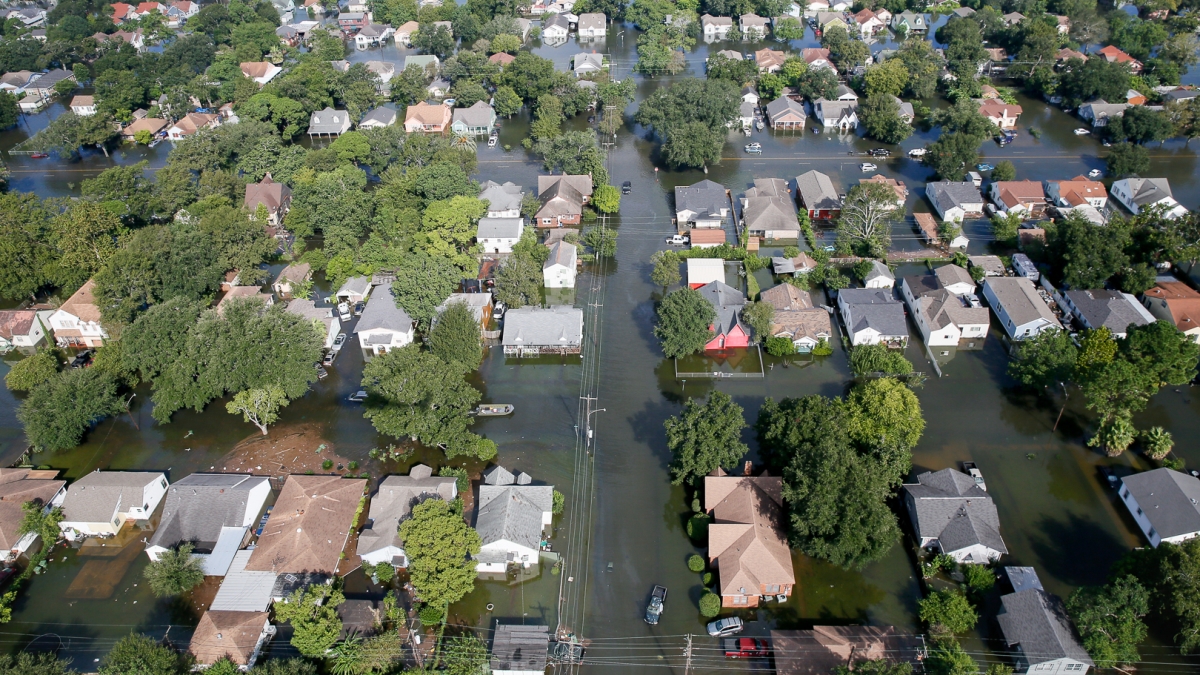ASU engineer on rebuilding after a hurricane: First, sweep the porch
Starting small is key to disaster recovery, says expert who lived through Katrina and created a firm to help rebuild New Orleans

When Tony Lamanna bought his home in New Orleans, the civil engineer discovered a hatchet in the attic. The hatchet was stored there to chop an escape hole through the roof if the house flooded up to the attic. It’s a Gulf Coast precaution. When he sold the house, it stayed there.
Lamanna, now an associate professor in Arizona State University’s School of Sustainable Engineering and the Built Environment, was teaching at Tulane University when Hurricane Katrina hit New Orleans in 2005.
When Tulane started shutting down its engineering programs, Lamanna stayed and started an engineering firm to assist rebuilding the city. His expertise eventually grew to encompass building repair, rehabilitation, retrofit and adaptive reuse.
Like the rest of the nation, he watched this past month as Hurricane Harvey slammed into metro Houston, covering 70 percent of Harris County’s 1,800 square miles with 1.5 feet of water, killing about 50 people, damaging or destroying 200,000 homes and displacing more than a million people.
“This is going to be a massive, massive cleanup process,” Texas Gov. Greg Abbott told “Good Morning America.” “This is not going to be a short-term project. This is going to be a multi-year project for Texas to be able to dig out of this catastrophe.”
Houston Mayor Sylvester Turner made a public plea over the holiday weekend.
“Over 95 percent of the city is now dry,” he told NBC News. “And I'm encouraging people to get up and let's get going.”
It turns out that’s the best advice anyone can give. ASU Now spoke with Lamanna about first steps and next steps.
Question: Large-scale — you’ve got to get the power and water on before you do anything. What are the next steps after that?
Answer: There’s a lot going on there. Probably if your house was flooded the power company is going to pull the meter because they don’t want you just turning the power back on. You’re probably going to need a licensed electrician to certifty your house before they give you your meter back.
It’s “start inward.” It’s such a monumental task for cleaning up after. What do you do when the city is destroyed? The best piece of advice I got came from a friend of mine in New Orleans who is German. He had a mother who lived through World War II. She lived in Dresden, so the city was destroyed. What do you do? Take care of your house. Sweep the porch. Sweep the debris. Fix what you can fix in your house. Then you help the neighbors with their house. Then you help the neighborhood. And you just go out from there. You have to start small. This is what happened in Katrina. You see it when there’s disasters ... there’s going to be some level of shock there, but you have to start doing something.
Q: What are city officials looking at at this point? They want to get the trash picked up, all the debris that has been hauled out to the curb.
A: There’s going to be staging areas. In New Orleans they have West End Boulevard where they just immediately piled everything. ... After Katrina there were houses in the middle of the road, so you had to get stuff cleared to move through the area. They need to have first responders able to get to people, so they’re clearing a path.
They’re checking out their infrastructure. A lot of neighborhoods flooded after the fact because they had to relieve pressure on levees.
Q: There was still flooding as of this week. People are still getting flooded out.
A: That’s probably their number one concern right now, that they don’t have failure in the infrastructure system, in the water control system. If a levee goes, everyone gets flooded. So it’s right now it’s selective flooding to relieve pressure. I’m pretty sure the backs (of the levees) aren’t armored. You armor the front for water lapping up against it. Often the back side only has grass. If it overtops, it’s going to erode. It’s funny because the Army Corps considers grass to be armor.
Q: The governor of Texas said it’s going to take years to recover from this. Is that accurate?
A: Actually it might be even more because of the magnitude. The metro New Orleans area when Katrina hit was 1.5 million (people). What’s Houston — 6.5 million? And this is not just Houston; this is Beaumont, Port Arthur, this is major.
Officials are probably focusing on infrastructure right now. As much as they need to take care of residents, getting the port facilities back in business, getting the business infrastructure back in place is important. Getting the schools open; after Katrina, most schools didn’t think about opening for a semester, let alone a year. ... Schools are important, because you’re going to start losing professionals who have kids. ... That’s a big thing.
Q: There’s talk of buying people out and not letting them build in certain areas.
A: This is another discussion. Part of the puzzle is what do you do next? It’s politically insensitive to say, “We’re not rebuilding that area” in general because those areas tend to be poorer. ...
I feel that could potentially be a plan for next time, that we don’t rebuild certain areas. You make the plans now for the next time, because you’ve got these large swaths of the city where we’re providing police protection, fire protection, and you’ve got the infrastructure, water, sewer and very few residents. I think there’s an opportunity — not for this time, but for next time — for Houston to say, “We need to further develop this spillway; when the water gets high we can open it up and flood these grassy plains or baseball fields or something,” and not allow construction there.
Answers edited for clarity and length. Top photo: Flooding in Port Arthur, Texas. Photo by SC National Guard (170831-Z-AH923-023) [Public domain], via Wikimedia Commons
More Science and technology

ASU receives 3 awards for research critical to national security
Three researchers in the Ira A. Fulton Schools of Engineering at Arizona State University have received grant awards under the Defense Established Program to Stimulate Competitive Research, or…

Celebrating 34 years of space discovery with NASA
This year, NASA's Hubble Space Telescope (HST) is celebrating its 34th anniversary of the world's first space-based optical telescope, which paved the scientific pathway for NASA's James Webb Space…

Making magic happen: Engineering and designing theme parks
The themed entertainment industry is widespread and diverse, encompassing everything from theme parks to aquariums, zoos, water parks, museums and more. The Theme Park Engineering and Design…